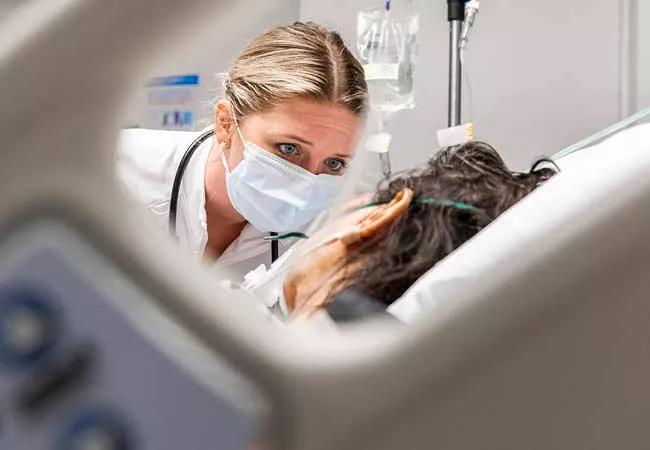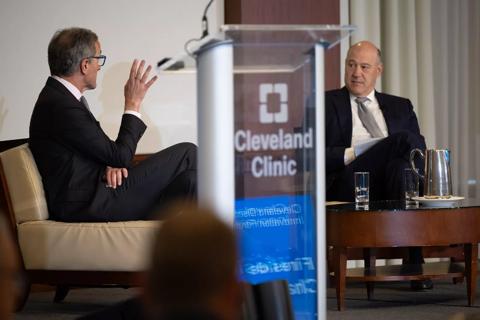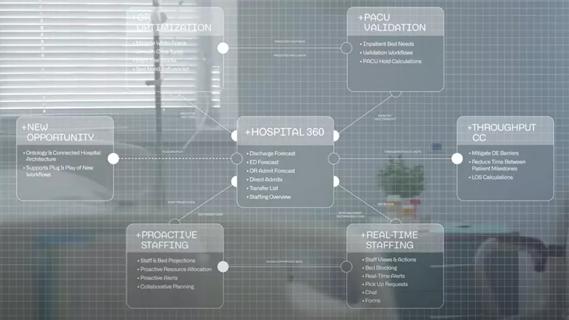Shared decision-making provides a platform for leadership development, clinical excellence

Cleveland Clinic nurses have long been ardent supporters of shared governance, an organizational structure for shared decision-making in the care of patients. Ideally, the principles and processes of the model provide nurses with a platform for sharing their voices, affecting clinical practice, promoting nursing excellence, and bolstering job satisfaction, loyalty and leadership development.
Advertisement
Cleveland Clinic is a non-profit academic medical center. Advertising on our site helps support our mission. We do not endorse non-Cleveland Clinic products or services. Policy
Shared governance thrives on monthly meetings – the grassroots of the model – in which nurse representatives from individual hospital units are invited to provide input on key issues. Unfortunately, when regular gatherings were replaced by virtual meetings during the COVID-19 pandemic, many nurses struggled to stay involved in the health system’s shared governance program, explains Lydia Booher, PhD(c), APRN, ACNS-BC, ONC, who facilitates the Shared Governance Council at Cleveland Clinic Akron General Hospital.
“It became apparent that the pandemic had caused us to lose momentum; we’d need to make a conscious effort to recruit new council participants,” says Booher, a clinical nurse specialist. “Nurses run in packs. Because we are motivated by the inspiration we get from one other, I knew relationship-building could play a pivotal role in reinvigorating the program.
Faced with the waning interest of her colleagues, Booher knew she needed to do more to persuade other nurses to get involved in shared governance. She first reached out to nurse managers, asking them to identify other nurses on their units who showed leadership potential and were eager to learn more about the model.
“Many of our nurse managers participated in the Shared Governance Council while working at the bedside, so they understand the value of its structure,” she explains. “I’ve always believed that one of the best ways to revive any program, including this one, is to encourage nurses who are passionate about its benefits to share their enthusiasm with others.”
Advertisement
Although Cleveland Clinic’s shared governance meetings are now held in person, Booher explains that other personal and professional factors, including the required time commitment, can sometimes discourage participation. In addition, she says bedside nurses may not see themselves as leaders, even though they expertly supervise the care of their patients. By identifying and tapping into their strengths, Booher hopes to encourage these caregivers to grow by engaging in shared governance.
By forming individual connections with potential nurse leaders, Booher says she has seen the program strengthen in number and resolve. In the span of only a few months, the council has welcomed new representatives from at least five units that have never had them before.
Staffing shortages brought on by the pandemic have required Cleveland Clinic to recruit and hire a large number of new nurses. Booher makes it a point to talk with these new caregivers about the advantages of shared governance. Noting that it is often the novice nurses who are especially eager to get involved, she says the best time to encourage them is early in their careers.
“I explain how shared governance is an exchange of power – that nurses at the grass-roots level bring the voice of the bedside nurse to the executives at the top,” she says. “The model allows power to be shared; everyone comes together to solve issues.”
Booher adds that once she explains shared governance in this way, her colleagues understand it is actually a privilege to be a part of it.
Advertisement
“It is inspiring to watch nurses at the bedside shake off the trauma they have experienced in the past two years with the pandemic and make a commitment to shared governance, which gives a voice for the practice at the bedside,” Booher explains. “These nurses want to make a difference for themselves, their colleagues and – ultimately – for their patients. They are the future of nursing. It is important for each and every one of them to be at that table.”
Advertisement
Advertisement

Advanced software streamlines charting, supports deeper patient connections

How holding simulations in clinical settings can improve workflow and identify latent operational threats

Interactive Zen Quest experience helps promote relaxing behaviors

Cleveland Clinic and IBM leaders share insights, concerns, optimism about impacts

Cleveland Clinic partners with Palantir to create logistical command center

A Q&A with organizational development researcher Gina Thoebes

Cleveland Clinic transformation leader led development of benchmarking tool with NAHQ

Raed Dweik, MD, on change management and the importance of communication